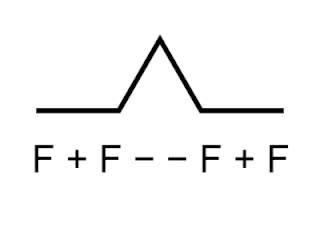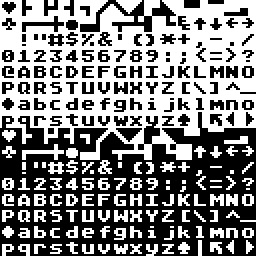Related Research Articles

Logo is an educational programming language, designed in 1967 by Wally Feurzeig, Seymour Papert, and Cynthia Solomon. Logo is not an acronym: the name was coined by Feurzeig while he was at Bolt, Beranek and Newman, and derives from the Greek logos, meaning word or thought.
Tiny BASIC is a family of dialects of the BASIC programming language that can fit into 4 or fewer KBs of memory. Tiny BASIC was designed by Dennis Allison and the People's Computer Company (PCC) in response to the open letter published by Bill Gates complaining about users pirating Altair BASIC, which sold for $150. Tiny BASIC was intended to be a completely free version of BASIC that would run on the same early microcomputers.

Li-Chen Wang is an American computer engineer, best known for his Palo Alto Tiny BASIC for Intel 8080-based microcomputers. He was a member of the Homebrew Computer Club and made significant contributions to the software for early microcomputer systems from Tandy Corporation and Cromemco. He made early use of the word copyleft, in Palo Alto Tiny BASIC's distribution notice "@COPYLEFT ALL WRONGS RESERVED" in June 1976.
GRASS is a programming language created to script 2D vector graphics animations. GRASS was similar to BASIC in syntax, but added numerous instructions for specifying 2D object animation, including scaling, translation and rotation over time. These functions were directly supported by the Vector General 3D graphics terminal GRASS was written for. It quickly became a hit with the artistic community who were experimenting with the new medium of computer graphics, and is most famous for its use by Larry Cuba to create the original "attacking the Death Star will not be easy" animation in Star Wars (1977).

The Bally Astrocade is a second-generation home video game console and simple computer system designed by a team at Midway, at that time the videogame division of Bally. It was originally announced as the "Bally Home Library Computer" in October 1977 and initially made available for mail order in December 1977. But due to production delays, the units were first released to stores in April 1978 and its branding changed to "Bally Professional Arcade". It was marketed only for a limited time before Bally decided to exit the market. The rights were later picked up by a third-party company, who re-released it and sold it until around 1984. The Astrocade is particularly notable for its very powerful graphics capabilities for the time of release, and for the difficulty in accessing those capabilities.

Atari BASIC is an interpreter for the BASIC programming language that shipped with Atari 8-bit computers. Unlike most American BASICs of the home computer era, Atari BASIC is not a derivative of Microsoft BASIC and differs in significant ways. It includes keywords for Atari-specific features and lacks support for string arrays.
Microsoft BASIC is the foundation software product of the Microsoft company and evolved into a line of BASIC interpreters and compiler(s) adapted for many different microcomputers. It first appeared in 1975 as Altair BASIC, which was the first version of BASIC published by Microsoft as well as the first high-level programming language available for the Altair 8800 microcomputer.
In computer graphics, turtle graphics are vector graphics using a relative cursor upon a Cartesian plane. Turtle graphics is a key feature of the Logo programming language.

The ATASCII character set, from ATARI Standard Code for Information Interchange, alternatively ATARI ASCII, is a character encoding used in the Atari 8-bit home computers. ATASCII is based on ASCII, but is not fully compatible with it.

Vilnius BASIC, sometimes known as BK BASIC, is a dialect of the BASIC programming language running on the Elektronika BK-0010-01/BK-0011M and UKNC computers. It was developed at Vilnius University, located in Lithuania which was a republic of the Soviet Union at the time.
BASIC 8 – "The Enhanced Graphics System For The C128" – was an American-designed graphics system developed by Walrusoft of Gainesville, Florida and published in 1986 by Patech Software of Somerset, New Jersey. The system was an extension of Commodore's BASIC 7.0 for the Commodore 128 computer. BASIC 8.0 provided commands lacking in BASIC 7.0 to generate (color) graphics in the C128's high-resolution 80-column mode for RGB monitors.
Optimized Systems Software (OSS) was a company that produced disk operating systems, programming languages with integrated development environments, and applications primarily for Atari 8-bit computers. The founders of OSS previously developed Atari DOS, Atari BASIC, and the Atari Assembler Editor for Atari, Inc., and many OSS products are substantially improved versions. OS A+ and DOS XL are based on Atari DOS. BASIC A+, BASIC XL, and BASIC XE are based on Atari BASIC. EASMD and MAC/65 are modeled on the Atari Assembler Editor. Action! is an ALGOL-inspired compiled programming language with an integrated full-screen editor. OSS also sold some software for the Apple II.
Atari Assembler Editor is a ROM cartridge-based development system released by Atari, Inc. in 1981. It is used to edit, assemble, and debug 6502 programs for Atari 8-bit computers without the need for additional tools. It was programmed by Kathleen O'Brien of Shepardson Microsystems, the company which wrote Atari BASIC, and Assembler Editor shares many design concepts with that language implementation.

Simons' BASIC is an extension to BASIC 2.0 for the Commodore 64 home computer. Written by British programmer David Simons in 1983, who was 16 years old at the time, it was distributed by Commodore as a cartridge.

Many games, utilities, and educational programs were available for Atari 8-bit computers. Atari, Inc. was primarily the publisher following the launch of the Atari 400/800 in 1979, then increasingly by third parties. Atari also distributed "user written" software through the Atari Program Exchange from 1981 to 1984. After APX folded, many titles were picked up by Antic Software.
Level I BASIC is a dialect of the BASIC programming language that shipped with the first TRS-80, the TRS-80 Model I.

A BASIC interpreter is an interpreter that enables users to enter and run programs in the BASIC language and was, for the first part of the microcomputer era, the default application that computers would launch. Users were expected to use the BASIC interpreter to type in programs or to load programs from storage.
Wang BASIC is a series of BASIC programming languages for computers from Wang Laboratories. The term can be used to refer to the BASIC on any Wang machine, but is mostly associated with the versions on the Wang 2200 minicomputer series of the early 1970s. When these machines were updated to the VP series in 1976, BASIC-2 was introduced and remained the pattern for future machines in the 2200 series. A planned BASIC-3 was never released.
References
- ↑ The Blue Book for the Atari Computer. WIDL Video. 1983. ISBN 9780684179216.
- 1 2 3 4 5 6 Wang 1977, p. 334.
- ↑ Wang, Li-Chen (May 1976). "Palo Alto Tiny BASIC". Dr. Dobb's Journal. 1 (5): 12–25.
- ↑ Rauskolb, Robert (December 1976). "Dr. Wang's Palo Alto Tiny BASIC" (PDF). Interface Age. pp. 92–108.
- ↑ APX listing at atariarchives.org
- 1 2 3 4 Stewart 1982, p. 4.
- ↑ Wang 1977, p. 345.
- ↑ Wang 1977, p. 334,335.
- ↑ Stewart 1982, p. 10.
- ↑ Stewart 1982, p. 3.
- 1 2 Wang 1977, p. 336.
- ↑ Stewart 1982, p. 5.
- ↑ Wang 1977.
- ↑ Stewart 1982.
Bibliography
- Wang, Li-Chen (September 1977). "An Interactive Programming Language for Control of Robots". Dr. Dobb's Journal. Vol. 2, no. 8. pp. 334–345.
- Stewart, Harry (1982). Extended WSFN (PDF). APX.